Related Research Articles

Amethyst is a violet variety of quartz. The name comes from the Koine Greek αμέθυστος amethystos from α- a-, "not" and μεθύσκω methysko / μεθώ metho, "intoxicate", a reference to the belief that the stone protected its owner from drunkenness. Ancient Greeks wore amethyst and carved drinking vessels from it in the belief that it would prevent intoxication.
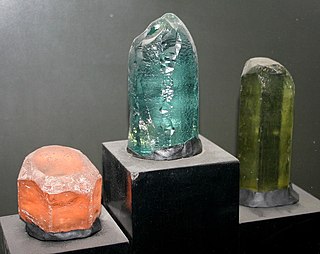
Beryl ( BERR-əl) is a mineral composed of beryllium aluminium silicate with the chemical formula Be3Al2Si6O18. Well-known varieties of beryl include emerald and aquamarine. Naturally occurring, hexagonal crystals of beryl can be up to several meters in size, but terminated crystals are relatively rare. Pure beryl is colorless, but it is frequently tinted by impurities; possible colors are green, blue, yellow, pink, and red (the rarest). It is an ore source of beryllium.
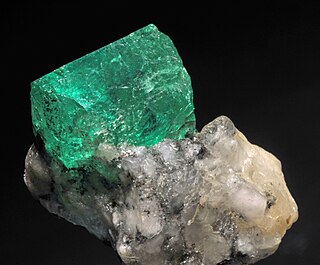
Emerald is a gemstone and a variety of the mineral beryl (Be3Al2(SiO3)6) colored green by trace amounts of chromium or sometimes vanadium. Beryl has a hardness of 7.5–8 on the Mohs scale. Most emeralds have lots of material trapped inside during the gem's formation, so their toughness (resistance to breakage) is classified as generally poor. Emerald is a cyclosilicate.

A gemstone is a piece of mineral crystal which, in cut and polished form, is used to make jewelry or other adornments. However, certain rocks and occasionally organic materials that are not minerals are also used for jewelry and are therefore often considered to be gemstones as well. Most gemstones are hard, but some soft minerals are used in jewelry because of their luster or other physical properties that have aesthetic value. Rarity and notoriety are other characteristics that lend value to gemstones.

The University of Pennsylvania, often abbreviated simply as Penn or UPenn, is a private Ivy League research university in Philadelphia. It was one of nine colonial colleges chartered prior to the U.S. Declaration of Independence when Benjamin Franklin, the university's founder and first president, advocated for an educational institution that trained leaders in academia, commerce, and public service. Penn identifies as the fourth-oldest institution of higher education in the United States, though this representation is challenged by other universities. Benjamin Franklin and other Philadelphians established the university in 1749, which would make it the fifth-oldest institution of higher education.
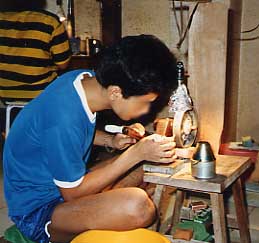
Lapidary is the practice of shaping stone, minerals, or gemstones into decorative items such as cabochons, engraved gems, and faceted designs. A person who practices lapidary is known as a lapidarist. A lapidarist uses the lapidary techniques of cutting, grinding, and polishing. Hardstone carving requires specialized carving techniques.

The Peacock Throne was a famous jewelled throne that was the seat of the emperors of the Mughal Empire in India. It was commissioned in the early 17th century by Emperor Shah Jahan and was located in the Diwan-i-Khas in the Red Fort of Delhi. It was named after a peacock as two peacocks are shown dancing at its rear.
Gisela Marie Augusta Richter was a British-American classical archaeologist and art historian. She was a prominent figure and an authority in her field.

Johann Michael Adolf Furtwängler was a German archaeologist, teacher, art historian and museum director. He was the father of the conductor Wilhelm Furtwängler and grandfather of the German archaeologist Andreas Furtwängler.
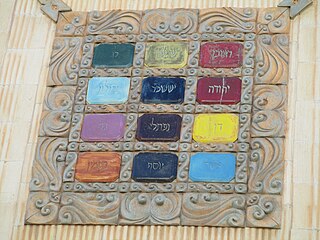
The priestly breastplate or breastpiece of judgment was a sacred breastplate worn by the High Priest of the Israelites, according to the Book of Exodus. In the biblical account, the breastplate is termed the breastplate of judgment, because the Urim and Thummim were placed upon it.(Exodus 28:30). These elements of the breastplate are said in the Exodus verse to carry the judgement of God concerning the Israelites at all times.

The Princeton Branch is a commuter rail line and service owned and operated by New Jersey Transit (NJT) in the U.S. state of New Jersey. The line is a short branch of the Northeast Corridor Line, running from Princeton Junction northwest to Princeton with no intermediate stops. Also known as the Dinky, or the Princeton Junction and Back (PJ&B), the branch is served by special shuttle trains. Now running 2.7 mi (4.3 km) along a single track, it is the shortest scheduled commuter rail line in the United States. The run takes approximately 5 minutes in each direction.

Amy Gutmann is an American academic and diplomat who is the United States Ambassador to Germany. She was the eighth president of the University of Pennsylvania. In November 2016, the school announced that her contract had been extended to 2022, which made her the longest-serving president in the history of the University of Pennsylvania. Gutmann resigned from her role as president on February 8, 2022, following her confirmation by the Senate as ambassador, after 18 years at the University.
Michael Parker Pearson, is an English archaeologist specialising in the study of the Neolithic British Isles, Madagascar and the archaeology of death and burial. A professor at the UCL Institute of Archaeology, he previously worked for 25 years as a professor at the University of Sheffield in England, and was the director of the Stonehenge Riverside Project. A prolific author, he has also written a variety of books on the subject.
The year 1994 in archaeology involved some significant events.
Sir John Boardman, is a classical archaeologist and art historian. He has been described as "Britain's most distinguished historian of ancient Greek art."

The Plaquemine culture was an archaeological culture centered on the Lower Mississippi River valley. It had a deep history in the area stretching back through the earlier Coles Creek and Troyville cultures to the Marksville culture. The Natchez and related Taensa peoples were their historic period descendants. The type site for the culture is the Medora site in Louisiana; while other examples include the Anna, Emerald, Holly Bluff, and Winterville sites in Mississippi.
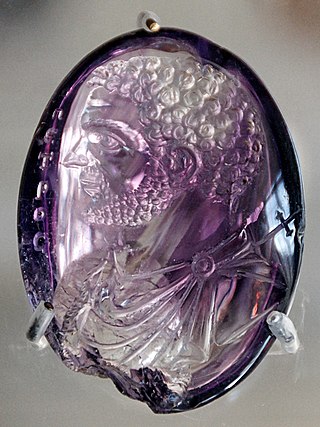
An engraved gem, frequently referred to as an intaglio, is a small and usually semi-precious gemstone that has been carved, in the Western tradition normally with images or inscriptions only on one face. The engraving of gemstones was a major luxury art form in the Ancient world, and an important one in some later periods.

Hardstone carving, in art history and archaeology, is the artistic carving of semi-precious stones, such as jade, rock crystal, agate, onyx, jasper, serpentinite, or carnelian, and for objects made in this way. Normally the objects are small, and the category overlaps with both jewellery and sculpture. Hardstone carving is sometimes referred to by the Italian term pietre dure; however, pietra dura is the common term used for stone inlay work, which causes some confusion.
Gertrud Seidmann, was an Austrian-British linguist and jewellery historian, specialising in engraved gems.
References
- ↑ "Four seniors, one alumnus receive Gates Cambridge Scholarships". Princeton Weekly Bulletin. Princeton University. June 2, 2003. Retrieved February 20, 2018.
- ↑ "The Eccentric Maxwell Sommerville". University of Pennsylvania Museum of Archaeology and Anthropology . University of Pennsylvania . Retrieved February 20, 2018.
- ↑ Thorpe, Edgar (2012). The Pearson General Knowledge Manual 2012. Pearson Education. p. B5. ISBN 978-8131761908.